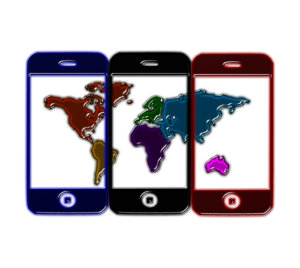 Your phone. Today more than ever, it is your lifeline. We call, text, video chat, stream shows and movies, check out social media accounts, even apprehensively research health symptoms. Naturally, this has paved the way for a transformation in how we conduct business. Your future workforce doesn’t sit in front of a computer all day. Your next worker needs to search and apply for jobs, participate in interviews, and even schedule their next gig, all from their mobile phone.
Your phone. Today more than ever, it is your lifeline. We call, text, video chat, stream shows and movies, check out social media accounts, even apprehensively research health symptoms. Naturally, this has paved the way for a transformation in how we conduct business. Your future workforce doesn’t sit in front of a computer all day. Your next worker needs to search and apply for jobs, participate in interviews, and even schedule their next gig, all from their mobile phone.
Here are five reasons why organizations are making mobile a huge part of their staffing processes.
1. The job hunt begins on the phone. In fact, Kelton Research reported that 86 percent of active candidates use their smartphone to begin a job search and, if interested, 70 percent would like to apply via their mobile. Some forward-thinking organizations are ahead of the game – 34 percent of 18-29-year-olds have already used their smartphone to apply for a job. It’s clear that mobile-friendly applications are becoming necessary for companies that want to stay on top of hiring trends.
2. The largest talent pool is millennials. Last year, millennials surpassed Generation X workers to become the largest group in the workforce. With their new rise to power, they’re influencing companies to adapt to their habits and behaviors. One report shared that 80 percent of Millennials own a smartphone. Taking it one step further, one in five Millennials access the Internet solely through their tablets or phones. If companies haven’t adapted their hiring processes to be mobile friendly by now, they’re probably scrambling.
3. Flexibility, flexibility, flexibility. The on-demand and instant gratification nature of our economy has led to the workforce wanting flexibility on their terms. They want to more quickly and easily apply to jobs, which means doing so through their smartphones. They are happy to interview for a position via FaceTime or Skype if it means they don’t have to take an entire day to go through the process in person. Companies that prescreen and video interview their candidates are already ahead of the curve.
4. The means for mobile scheduling exist. Gone are the days of paper rosters and scheduling fiascos. As staffing professionals, you’re always on the go, and your workers are as well. Many of them access their email and calendar only from their smart phone. It is easy to find a ride via your Uber app, and today it’s just as simple for your client to find a worker via a mobile scheduling app.
5. Your clients are mobile, too. Chances are a majority of your clients are also relying on their smartphones for communication via text or email. They expect you to be available and responsive whether you’re sitting at your desk or in an off-site meeting. When you cut down the amount of time between responses, you have more time to plan and prepare for orders, recruitment efforts, and any unexpected changes along the way. Besides communication, what about shift time tracking, hours reconciliation, invoicing, and payments? All of this administrative burden on the client and your business can be streamlined by technology.






